-
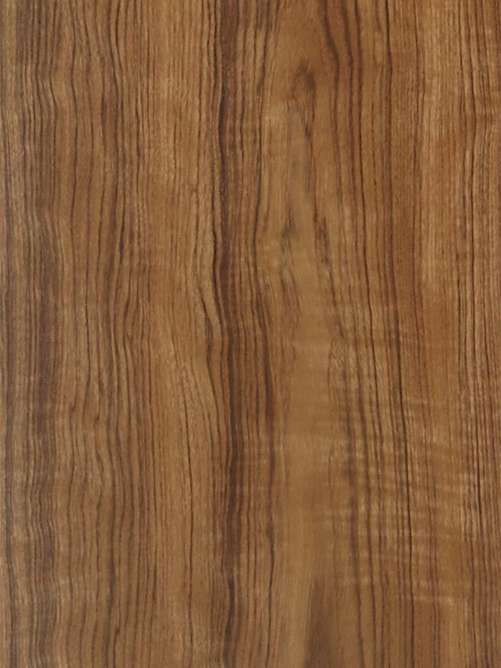 Teak is among the oldest commercial lumbers and remains a popular wood today, particularly in Asia, the US, and Scandinavia. It ranges in color from straw-colored (which some consider the most desirable) to dark, dusty brown with fine, dark, contrasting stripes. Flat cut, the mineral streaks provide a contrasty grain structure in the cathedral pattern, much like American walnut. Pure golden teak without mineral streaking is available, but rare. Reconstituted teak is a manmade product that provides the beauty of teak with outstanding consistency in color and grain from sheet to sheet. Also available in recon. Learn About Veneer Cut & Matching
Teak is among the oldest commercial lumbers and remains a popular wood today, particularly in Asia, the US, and Scandinavia. It ranges in color from straw-colored (which some consider the most desirable) to dark, dusty brown with fine, dark, contrasting stripes. Flat cut, the mineral streaks provide a contrasty grain structure in the cathedral pattern, much like American walnut. Pure golden teak without mineral streaking is available, but rare. Reconstituted teak is a manmade product that provides the beauty of teak with outstanding consistency in color and grain from sheet to sheet. Also available in recon. Learn About Veneer Cut & Matching -
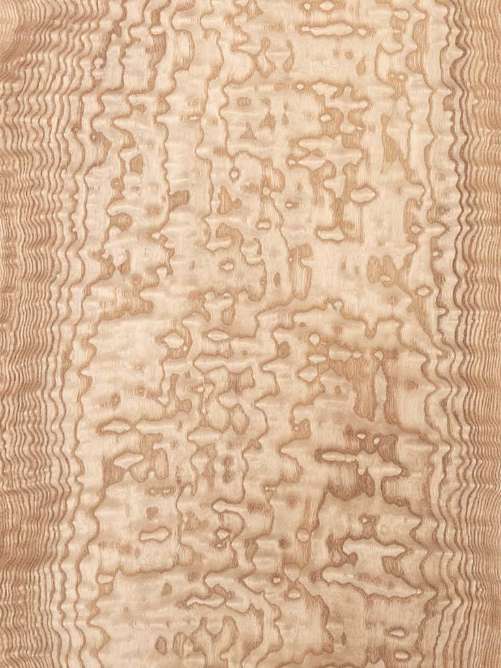 Tamo is the name given to highly figured, rotary cut, Japanese ash. This highly prized veneer is known and sought-after worldwide for its stunning, lustrous, Pommele or "peanut shell" figure—a lively, variable, swirling background with peanut or blister figuring. Colors range from brownish-tan to gray to almost white—all of which provide rare and uncommon options for highly decorative interior spaces and custom furniture. Learn About Veneer Cut & Matching
Tamo is the name given to highly figured, rotary cut, Japanese ash. This highly prized veneer is known and sought-after worldwide for its stunning, lustrous, Pommele or "peanut shell" figure—a lively, variable, swirling background with peanut or blister figuring. Colors range from brownish-tan to gray to almost white—all of which provide rare and uncommon options for highly decorative interior spaces and custom furniture. Learn About Veneer Cut & Matching -
 Actually a maple by genus, sycamore is among the most valuable native broad-leafed trees in Europe. Nearly white in color with a fine, close texture, notable uniform structure, and straight grain that may be figured, this light color wood evokes a minimalist elegance. The flat cut veneer shows the characteristic cathedral pattern. It readily accepts stains and can be dyed to many colors, most popularly a silver-gray. Learn About Veneer Cut & Matching
Actually a maple by genus, sycamore is among the most valuable native broad-leafed trees in Europe. Nearly white in color with a fine, close texture, notable uniform structure, and straight grain that may be figured, this light color wood evokes a minimalist elegance. The flat cut veneer shows the characteristic cathedral pattern. It readily accepts stains and can be dyed to many colors, most popularly a silver-gray. Learn About Veneer Cut & Matching -
 Actually a maple by genus, sycamore is among the most valuable native broad-leafed trees in Europe. Nearly white in color with a fine, close texture, notable uniform structure, and straight grain that may be figured, this light color wood evokes a minimalist elegance. The flat cut veneer shows the characteristic cathedral pattern. It readily accepts stains and can be dyed to many colors, most popularly a silver-gray. Learn About Veneer Cut & Matching
Actually a maple by genus, sycamore is among the most valuable native broad-leafed trees in Europe. Nearly white in color with a fine, close texture, notable uniform structure, and straight grain that may be figured, this light color wood evokes a minimalist elegance. The flat cut veneer shows the characteristic cathedral pattern. It readily accepts stains and can be dyed to many colors, most popularly a silver-gray. Learn About Veneer Cut & Matching -
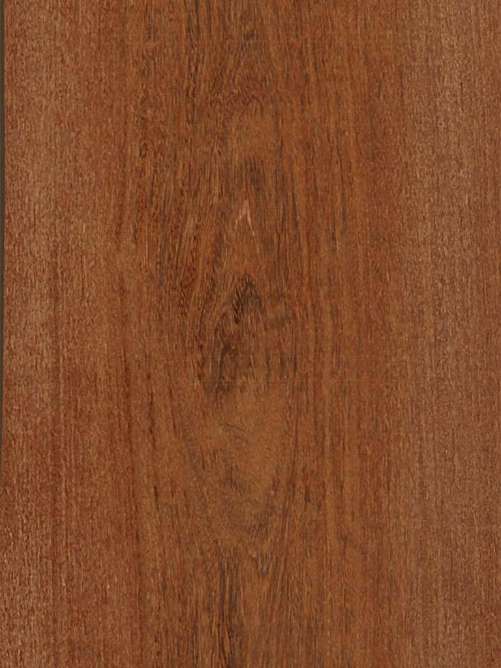 Named for a city in northern Brazil, Sucupira is a South American hardwood with a character similar to rosewood or teak. It has a warm chocolate color with a fine yellow stripe, a lustrous finish, and a lively interlocking grain that is rarely figured. The flat cut veneer produces a beautiful cathedral pattern. Learn About Veneer Cut & Matching
Named for a city in northern Brazil, Sucupira is a South American hardwood with a character similar to rosewood or teak. It has a warm chocolate color with a fine yellow stripe, a lustrous finish, and a lively interlocking grain that is rarely figured. The flat cut veneer produces a beautiful cathedral pattern. Learn About Veneer Cut & Matching -
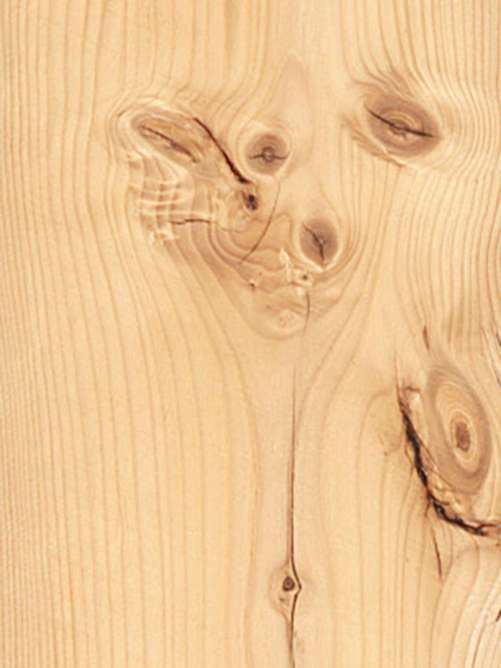 Vintage knotty spruce is sliced from hand-hewn beams reclaimed from old farmhouses, barns, or commercial buildings. Preserving the natural character of the wood, the beams are washed, de-nailed, dimensionally sorted, and then sliced into veneer. The veneer is generally straight-grained with knotty characteristics that include splits, checks, nail holes, and occasional discolorations that reflect its history and give the wood a rustic feel. This veneer is sliced at 1.4 mm and intended for use in random sequences. Learn About Veneer Cut & Matching
Vintage knotty spruce is sliced from hand-hewn beams reclaimed from old farmhouses, barns, or commercial buildings. Preserving the natural character of the wood, the beams are washed, de-nailed, dimensionally sorted, and then sliced into veneer. The veneer is generally straight-grained with knotty characteristics that include splits, checks, nail holes, and occasional discolorations that reflect its history and give the wood a rustic feel. This veneer is sliced at 1.4 mm and intended for use in random sequences. Learn About Veneer Cut & Matching -
 Pale yellow-gray to nearly white, sen is Japanese ash popular in Japan for both furniture and interiors. It has a straight, fine grain when cut on the quarter and a nice cathedral character with a fine grain on either side of the heart when flat cut. When marked with a Pommele figure, this veneer is called "Tamo". Sen is an excellent choice for a variety of interiors aesthetics including modern, Asian, and minimalist designs. Learn About Veneer Cut & Matching
Pale yellow-gray to nearly white, sen is Japanese ash popular in Japan for both furniture and interiors. It has a straight, fine grain when cut on the quarter and a nice cathedral character with a fine grain on either side of the heart when flat cut. When marked with a Pommele figure, this veneer is called "Tamo". Sen is an excellent choice for a variety of interiors aesthetics including modern, Asian, and minimalist designs. Learn About Veneer Cut & Matching -
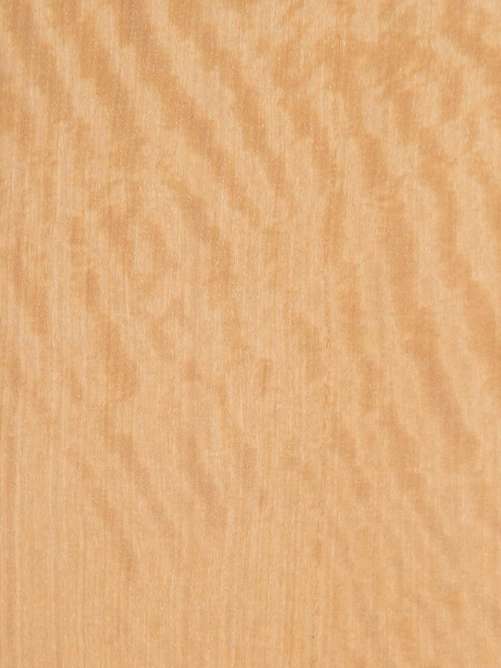 Satinwood is a pale gold wood with a rippled grain and straight striping. Typically figured, Satinwood often produces a bee’s wing or mottle figure. Satinwood is used for decorative inlays on table and conference tops. It is also used for high-quality furniture and cabinets. Select logs are sliced to produce extremely attractive veneers for high-end architectural paneling, cabinets, and marquetry. Learn About Veneer Cut & Matching
Satinwood is a pale gold wood with a rippled grain and straight striping. Typically figured, Satinwood often produces a bee’s wing or mottle figure. Satinwood is used for decorative inlays on table and conference tops. It is also used for high-quality furniture and cabinets. Select logs are sliced to produce extremely attractive veneers for high-end architectural paneling, cabinets, and marquetry. Learn About Veneer Cut & Matching -
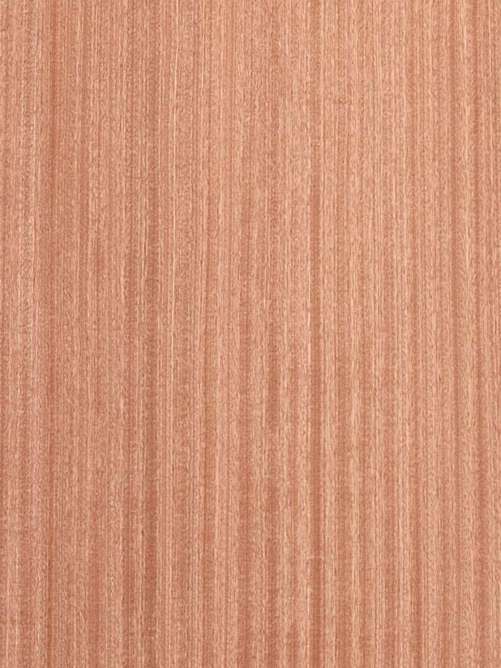 Sapele varies in color from log to log but is generally medium to dark red-brown. Finishing brings out an intense depth of color and highlights its natural luster, which is similar to mahogany. This veneer has a fine grain, a distinct and desirable stripe formation, and often carries a lively figure. Flat cut Sapele shows the characteristic heart or cathedral grain The highly prized Pommele Sapele is intensely marked with a swirly grain and randomly interspersed blisters, or Pommele markings. A high degree of luster gives Sapele a three-dimensional effect. Learn About Veneer Cut & Matching
Sapele varies in color from log to log but is generally medium to dark red-brown. Finishing brings out an intense depth of color and highlights its natural luster, which is similar to mahogany. This veneer has a fine grain, a distinct and desirable stripe formation, and often carries a lively figure. Flat cut Sapele shows the characteristic heart or cathedral grain The highly prized Pommele Sapele is intensely marked with a swirly grain and randomly interspersed blisters, or Pommele markings. A high degree of luster gives Sapele a three-dimensional effect. Learn About Veneer Cut & Matching -
 Sapele varies in color from log to log but is generally medium to dark red-brown. Finishing brings out an intense depth of color and highlights its natural luster, which is similar to mahogany. This veneer has a fine grain, a distinct and desirable stripe formation, and often carries a lively figure. Flat cut Sapele shows the characteristic heart or cathedral grain The highly prized Pommele Sapele is intensely marked with a swirly grain and randomly interspersed blisters, or Pommele markings. A high degree of luster gives Sapele a three-dimensional effect. Learn About Veneer Cut & Matching
Sapele varies in color from log to log but is generally medium to dark red-brown. Finishing brings out an intense depth of color and highlights its natural luster, which is similar to mahogany. This veneer has a fine grain, a distinct and desirable stripe formation, and often carries a lively figure. Flat cut Sapele shows the characteristic heart or cathedral grain The highly prized Pommele Sapele is intensely marked with a swirly grain and randomly interspersed blisters, or Pommele markings. A high degree of luster gives Sapele a three-dimensional effect. Learn About Veneer Cut & Matching -
 Sapele varies in color from log to log but is generally medium to dark red-brown. Finishing brings out an intense depth of color and highlights its natural luster, which is similar to mahogany. This veneer has a fine grain, a distinct and desirable stripe formation, and often carries a lively figure. Flat cut Sapele shows the characteristic heart or cathedral grain The highly prized Pommele Sapele is intensely marked with a swirly grain and randomly interspersed blisters, or Pommele markings. A high degree of luster gives Sapele a three-dimensional effect. Learn About Veneer Cut & Matching
Sapele varies in color from log to log but is generally medium to dark red-brown. Finishing brings out an intense depth of color and highlights its natural luster, which is similar to mahogany. This veneer has a fine grain, a distinct and desirable stripe formation, and often carries a lively figure. Flat cut Sapele shows the characteristic heart or cathedral grain The highly prized Pommele Sapele is intensely marked with a swirly grain and randomly interspersed blisters, or Pommele markings. A high degree of luster gives Sapele a three-dimensional effect. Learn About Veneer Cut & Matching -
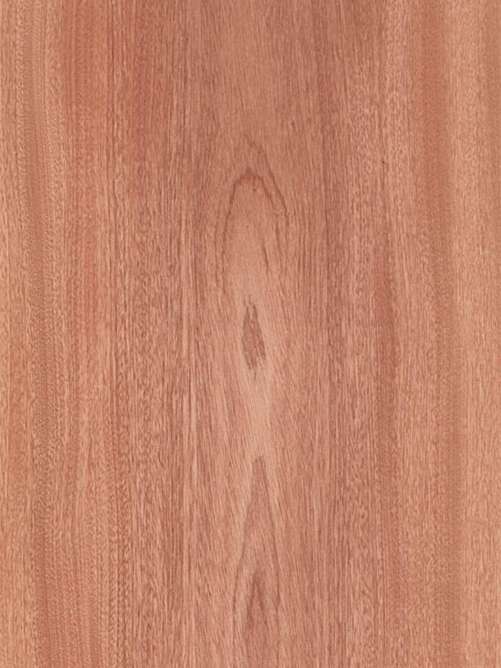 Sapele varies in color from log to log but is generally medium to dark red-brown. Finishing brings out an intense depth of color and highlights its natural luster, which is similar to mahogany. This veneer has a fine grain, a distinct and desirable stripe formation, and often carries a lively figure. Flat cut Sapele shows the characteristic heart or cathedral grain The highly prized Pommele Sapele is intensely marked with a swirly grain and randomly interspersed blisters, or Pommele markings. A high degree of luster gives Sapele a three-dimensional effect. Learn About Veneer Cut & Matching
Sapele varies in color from log to log but is generally medium to dark red-brown. Finishing brings out an intense depth of color and highlights its natural luster, which is similar to mahogany. This veneer has a fine grain, a distinct and desirable stripe formation, and often carries a lively figure. Flat cut Sapele shows the characteristic heart or cathedral grain The highly prized Pommele Sapele is intensely marked with a swirly grain and randomly interspersed blisters, or Pommele markings. A high degree of luster gives Sapele a three-dimensional effect. Learn About Veneer Cut & Matching

